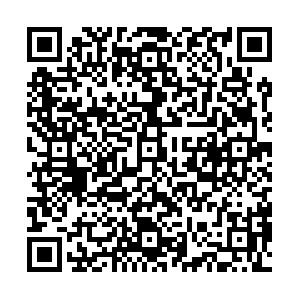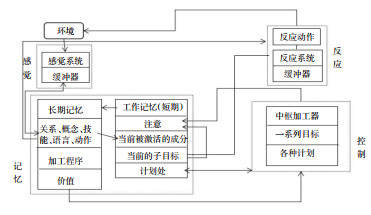A Review on Cognition and Evaluation of Traffic Signs on Expressways
-
摘要: 交通标志作为高速公路与驾驶人进行信息交流的纽带, 是道路交通必不可少的一部分。目前关于交通标志的研究已取得一定的成就, 但在某些方面仍存在不足之处。为此从视认性, 识别率、驾驶人理解能力以及驾驶水平4个方面分析交通标志认知的影响因素; 将有效性评价分为定量评价方法以及定性定量结合的评价方法。并从这2个角度对目前的研究进行综述和评论, 结果表明, 高速公路与城市道路的差异较大, 应考虑二者不同处, 对高速公路交通标志认知的影响因素进行研究; 由于每个信息中含有的信息量不同, 建议引入信息理论, 得出准确的信息量阈值; 未来需加强不同学科的交叉融合, 建议将统计概率模型与认知模型结合起来, 建立新的认知模型; 驾驶补偿策略和交感神经的兴奋范围是未来重点的研究方向; 交通标志大多是以组合的形式出现, 未来需要开展对交通标志组的研究。Abstract: Traffic signs, as the link of information exchange between highways and drivers, are an essential part of road traffic. At present, some achievements have been made in studying traffic signs, but there are still some shortcomings in some aspects. Therefore, this paper summarizes influencing factors of recognizing traffic signs. The analysis is performed from legibility, recognition rate, the understanding ability of drivers, and driver's driving level. The effectiveness evaluation is divided into quantitative analysis and qualitative and quantitative analysis. The results show that there are big differences between the expressways and urban roads, which should be considered to study the influencing factors of recognizing traffic signs. Since the amount of information contained in each sign varies, the information theory should be introduced to obtain an accurate threshold of information. In the future, the cross integration of different disciplines should be strengthened. The statistical probability model is combined with a cognitive model to establish a new cognitive model. The compensation strategy of driving and the range of sympathetic arousal will be the key directions. Traffic signs mostly appear in the form of combinations, so traffic sign groups should be studied in the future.
-
Key words:
- traffic signs /
- expressway /
- cognition /
- review /
- effectiveness evaluation model
-
表 1 交通标识研究主题
Table 1. Research topics of traffic signs
研究方向 研究层面 研究内容 影响因素 视认性 交通标志的制造材料、驾驶人自身特征、道路环境 识别性 交通标志信息数量及排列方式、交通标志信息的特性驾驶环境 理解能力 驾驶人的反应率、驾驶人驾龄和受教育水平 驾驶水平 驾驶人年龄、性别、受教育程度等、驾驶过程中的情绪 有效性评价 定性与定量相结合 运用AHP、DEA、模糊综合评价等方式进行定性与定量的决策分析 量化 建立量化模型对交通标志的有效性进行定量分析 表 2 交通标志视认性
Table 2. Visibility of traffic signs
表 3 交通标志识别率
Table 3. Recognition rate of traffic signs
表 4 驾驶人理解能力
Table 4. Understanding of drivers
-
[1] 交通运输部. 2018年全国收费公路统计公报[N]. 中国交通报, 2019-08-30(006).Ministry of Transport of the People's Republic of China. 2018 national statistical bulletin of toll roads[N]. China Communications News, 2019-08-30(006). (in Chinese) [2] 王振国. 绕城高速公路出入口指路标志信息量及版面设置研究[D]. 西安: 长安大学, 2018.WANG Zhenguo. Research on the information content and layout setting of guide signs at the entrances and exits of ring expressway[D]. Xi'an: Chang'an University, 2018. (in Chinese) [3] KAHNEMAN D, TREISMAN A. Changing views of attention and automaticity[M]. New York: Academic Press, 1984. [4] BROOKS R. Intelligence without representation[J]. Artificial Intelligence, 1991, 47(7): 139-159. http://www.sciencedirect.com/science/article/pii/000437029190053m [5] NEWELL A, SIMON H A. Human problem solving[M]. New Jersey: Prentice-Hall, 1972. [6] JEFF H, SANDRA B. 人工智能的未来[M]. 贺俊杰, 等译. 西安: 陕西科学技术出版社, 2006.JEFF H, SANDRA B. Future of Artificial Intelligence[M]. HU Junjie. Xi'an: Shannxi Science and Technology Press, 2006. (in Chinese) [7] 王海燕, 黄雅梅, 陈默, 等. 图标视觉搜索行为的ACT-R认知模型分析[J]. 计算机辅助设计与图形学学报, 2016, 28 (10): 1740-1749. doi: 10.3969/j.issn.1003-9775.2016.10.016WANG Haiyan, HUANG Yamei, CHEN Mo, et al. Analysis of cognitive model in icon search behavior based on ACT-R model[J]. Journal of Computer-Aided Design and Computer Graphics, 2016, 28(10): 1740-1749. (in Chinese) doi: 10.3969/j.issn.1003-9775.2016.10.016 [8] 杨新月. 基于认知活动链的驾驶员行为建模及仿真[D]. 济南: 山东理工大学, 2007.YANG Xinyue. Modeling and simulation of driving behavior based on cognitive activity chain[D]. Jinan: Shandong University of Technology, 2007. (in Chinese) [9] 彭聃龄, 张必隐. 认知心理学[M]. 杭州: 浙江教育出版社, 2004.PENG Jiling, ZHANG Biyin. Cognitive Psychology[M]. Hangzhou: Zhejiang Education Publishing House, 2004. (in Chinese) [10] 隽志才, 曹鹏, 吴文静. 基于认知心理学的驾驶员交通标志视认性理论分析[J]. 中国安全科学学报, 2005, 15(8): 8-11. doi: 10.3969/j.issn.1003-3033.2005.08.002JUAN Zhicai, CAO Peng, WU Wenjing. Study on driver traffic signs comprehension based on sognitive psychology[J]. China Safety Science Journal, 2005, 15(8): 8-11. (in Chinese) doi: 10.3969/j.issn.1003-3033.2005.08.002 [11] 胡祎程, 周晓宏, 王亮. 工程项目现场安全标志有效性评价[J]. 中国安全科学学报, 2012, 22(8): 37-42. https://www.cnki.com.cn/Article/CJFDTOTAL-ZAQK201208007.htmHU Yicheng, ZHOU Xiaohong, WANG Liang. Effectiveness evaluation of safety signs on the construction scene[J]. China Safety Science Journal, 2012, 22(8): 37-42. (in Chinese) https://www.cnki.com.cn/Article/CJFDTOTAL-ZAQK201208007.htm [12] 戴权, 王芳, 倪安宁. 认知过程中交通标志视认有效性影响因素分析[J]. 中国安全科学学报, 2009, 19(12): 57-60+201. doi: 10.3969/j.issn.1003-3033.2009.12.009DAI Quan, WANG Fang, NI Anning. Influence factors of traffic sign comprehension effectiveness in cognitive process[J]. China Safety Science Journal, 2009, 19(12): 57-60+201. (in Chinese) doi: 10.3969/j.issn.1003-3033.2009.12.009 [13] 中华人民共和国交通运输部. 道路交通标志和标线: GB 5768—2017[S]. 北京: 人民交通出版社, 2017.Ministry of Transport of the People's Republic of China. Road Traffic Signs and Makings: GB 5768—2017[S]. Beijing: China Communications Press, 2017. (in Chinese) [14] Al-MADAIN H, Al-JANAHI A R. Assessment of drivers'comprehension of traffic signs based on their traffic, personal and social characteristics[J]. Transportation Research Part F: Traffic Psychology and Behaviour, 2002, 5(1): 63-76. doi: 10.1016/S1369-8478(02)00006-2 [15] CHOOCHARUKUL K. An experimental analysis of factors affecting nighttime visibility of traffic signs[C]. TRB 2015 Annual Meeting, Washington, D.C. : TRB, 2015. [16] OBEIDAT M S, RYS M J, RYS A, et al. Evaluation of overhead guide sign sheeting materials to increase visibility and safety for drivers[J]. Applied Ergonomics, 2016, 56(7): 136-143. http://www.sciencedirect.com/science/article/pii/S0003687016300618 [17] 张卫华, 钱小慧, 冯忠祥, 等. 照度与视觉敏感度对驾驶辨识行为的影响研究[J]. 人类工效学, 2014, 20(4): 62-66. https://www.cnki.com.cn/Article/CJFDTOTAL-XIAO201404015.htmZHANG Weihua, QIAN Xiaohui, FENG Zhongxiang, et al. Study on the ifluence of illumination and visual sensitivity on diving recognition behavior[J]. Chinese Journal of Ergonomics, 2014, 20(4): 62-66. (in Chinese) https://www.cnki.com.cn/Article/CJFDTOTAL-XIAO201404015.htm [18] 黄小芳, 贾志绚, 卓亚娟. LED交通标志的视认性试验研究与分析[J]. 中国安全科学学报, 2017, 27(4): 37-42. https://www.cnki.com.cn/Article/CJFDTOTAL-ZAQK201704008.htmHUANG Xiaofang, JIA Zhixuan, ZHUO Yajuan. Experimental research on legibility of LED traffic signs[J]. Chinese Safety Science Journal, 2017, 27(4): 37-42. (in Chinese) https://www.cnki.com.cn/Article/CJFDTOTAL-ZAQK201704008.htm [19] 吴立新, 周晓岩. 高速公路驾驶员夜间识别距离研究[J]. 交通运输研究, 2012, 18(4): 48-51. https://www.cnki.com.cn/Article/CJFDTOTAL-JTBH201204012.htmWU Lixin, ZHOU Xiaoyan. Study on driver's identification distance at night on exprssway[J]. Transport Research, 2012, 18(4): 48-51. (in Chinese) https://www.cnki.com.cn/Article/CJFDTOTAL-JTBH201204012.htm [20] 贾强, 朱小光, 范杨洲. 安全禁止标志识别率与标志特征关系研究[J]. 井冈山大学学报(自然科学版), 2015, 36(2): 69-73. doi: 10.3969/j.issn.1674-8085.2015.02.016JIA Qiang, ZHU Xiaoguang, FAN Yangzhou. Research on the relationship of safety prohibition signs recognition rate and sign features[J]. Journal of Jinggangshan University(Natural Science Edition), 2015, 26(2): 69-73. (in Chinese) doi: 10.3969/j.issn.1674-8085.2015.02.016 [21] 祖永昶, 李娅, 王运霞, 等. 城市道路指路标志信息量限值研究[J]. 交通信息与安全, 2012, 30(6): 38-42. doi: 10.3963/j.issn1674-4861.2012.06.008ZU Yongchang, LI Ya, WANG Yunxia, et al. An approach to limit value of information amount for urban guide signs[J]. Journal of Transport Information and Safety, 2012, 30(6): 38-42. (in Chinese) doi: 10.3963/j.issn1674-4861.2012.06.008 [22] 王建军, 王娟, 吴海刚. 道路交通标志信息过载阈值研究[J]. 公路, 2009, 17(4): 174-180. https://www.cnki.com.cn/Article/CJFDTOTAL-GLGL200904042.htmWANG Jianjun, WANG Juan, WU Haigang. A study on threshold value of traffic sign information overload[J]. Highway, 2009, 17(4): 174-180. (in Chinese) https://www.cnki.com.cn/Article/CJFDTOTAL-GLGL200904042.htm [23] 张伟. 交通指路标志信息量化分析[J]. 城市交通, 2017, 15 (1): 72-77. https://www.cnki.com.cn/Article/CJFDTOTAL-CSJT201701012.htmZHANG Wei. Quantitative analysis of guide signs information[J]. Urban Transport of China, 2017, 15(1): 72-77. (in Chinese) https://www.cnki.com.cn/Article/CJFDTOTAL-CSJT201701012.htm [24] VILCHEZ J L. A method to measure representativity and univocity of traffic signs and to test their effect on movement[J]. MethodsX, 2019, 6(7): 155-123. http://www.sciencedirect.com/science/article/pii/S2215016119300019 [25] 邵海鹏, 慕伟, 叶益翔. 交叉口指路标志信息有效性量化模型研究[J]. 交通运输系统工程与信息, 2017, 17(4): 70-75. https://www.cnki.com.cn/Article/CJFDTOTAL-YSXT201704011.htmSHAO Haipeng, MU Wei, YE Yixiang. A quantitative model for the validity of guide sign information at intersection[J]. Journal of Transportation Systems Engineering and Information Technology, 2017, 17(4): 70-75. (in Chinese) https://www.cnki.com.cn/Article/CJFDTOTAL-YSXT201704011.htm [26] REN G C, ZHAO X H, LIN Z Z, et al. Research on the visual cognition patterns of exit guide sign viewing on freeway interchanges[J]. Advances in Mechanical Engineering, 2019, 11 (3): 1-13. http://www.researchgate.net/publication/331525187_Research_on_the_visual_cognition_patterns_of_exit_guide_sign_viewing_on_freeway_interchanges [27] 杨艳群, 樵婷, 郑新夷. 基于DEA的高速公路指路标志有效性分析[J]. 中国公路学报, 2020, 33(4): 1-17. doi: 10.3969/j.issn.1001-7372.2020.04.001YANG Yanqun, QIAO Ting, ZHENG Xinyi. Effectiveness analysis of freeway guide signs based on DEA model[J]. China Journal of Highway and Transport, 2020, 33(4): 1-17. (in Chinese) doi: 10.3969/j.issn.1001-7372.2020.04.001 [28] ANNIE W Y N, ALAN H S C. The effects of driver factors and sign design features on the comprehensibility of traffic signs[J]. Journal of Safety Research, 2008, 39(6): 321-328. [29] YANG Y Q, CHEN J Y, EASA S M, et al. Driving simulator study of the comparative effectiveness of monolingual and bilingual guide signs on Chinese highways[J]. Transportation Research Part F: Psychology and Behaviour, 2020, 68(8): 67-78. http://www.sciencedirect.com/science/article/pii/S1369847819303511 [30] Al-MADANI H. Influence of drivers'comprehension of posted signs on their safety related characteristics[J]. Accident Analysis & Prevention, 2000, 32(4): 575-581. http://www.ncbi.nlm.nih.gov/pubmed/10868760 [31] XIE L, WU C Z, LYU N C, Studying the effects of freeway alignment, traffic flow, and sign information on subjective driving workload and performance[J]. Advances in Mechanical Engineering, 2019, 11(5): 1-11. http://www.researchgate.net/publication/333496337_Studying_the_effects_of_freeway_alignment_traffic_flow_and_sign_information_on_subjective_driving_workload_and_performance [32] 王清洲, 陈佳梦, 范鑫, 等. 基于驾驶员心率变化的山区旅游公路线形安全性研究[J]. 交通信息与安全, 2018, 36(3): 19-26. doi: 10.3963/j.issn.1674-4861.2018.03.003WANG Qingzhou, CHEN Jiameng, FAN Xin, et al. A study on alignment security of tourist highways in mountain areas based on heart rate change of drivers[J]. Journal of Transport Information and Safety, 2018, 36(3): 19-26. (in Chinese) doi: 10.3963/j.issn.1674-4861.2018.03.003 [33] PRADHAN A K. Using eye movements to ealuate effects of driver age on risk perception in a driving simulator[J]. Hum Factors, 2005, 47(4): 840-852. doi: 10.1518/001872005775570961 [34] SANDER M S. Human factors in engineering and design[M]. Beijing: Tsinghua University Press, 2002. (in Chinese) [35] 王春雪, 吕淑然. 情绪对安全标志识别影响研究[J]. 中国安全科学学报, 2016, 26(3): 15-20. https://www.cnki.com.cn/Article/CJFDTOTAL-ZAQK201603003.htmWANG Chunxue, LYU Shuran. Research on effect of emotions on recognition of safety sign[J]. China Safety Science Journal, 2016, 26(3): 15-20. (in Chinese) https://www.cnki.com.cn/Article/CJFDTOTAL-ZAQK201603003.htm [36] 张殿业, 程静, 张艺. 情绪对驾驶行为影响研究[J]. 中国安全科学学报, 2018, 28(10): 19-24. https://www.cnki.com.cn/Article/CJFDTOTAL-ZAQK201810004.htmZHANG Dianye, CHENG Jing, ZHANG Yi. Influences of emotions on driving behaviors[J]. China Safety Science Journal, 2018, 28(10): 19-24. (in Chinese) https://www.cnki.com.cn/Article/CJFDTOTAL-ZAQK201810004.htm [37] DAGNALL E. E, KATZ J. B, BERTOAL M A, et al. Business Logo signing: Evaluation of the number of logo panels on specific service signs[J]. Transportation Research Record, 2013, 2365(1): 82-89. doi: 10.3141/2365-11 [38] 程国柱, 薛长龙, 韩娟. 高速公路驾驶员昼夜识别距离变化规律[J]. 西南交通大学学报, 2012, 47(6): 996-1002. doi: 10.3969/j.issn.0258-2724.2012.06.014CHENG Guozhu, XUE Changlong, HAN Juan. Changing rule of driver's recognition distance in daytime and nighttime on freeway[J]. Journal of Southwest Jiaotong University, 2012, 47 (6): 996-1002. (in Chinese) doi: 10.3969/j.issn.0258-2724.2012.06.014 [39] 曹鹏, 吴文静, 隽志才. 基于信息度量的交通标志视认性研究[J]. 公路交通科技, 2006, 23(9): 3-5. https://www.cnki.com.cn/Article/CJFDTOTAL-GLJK200609026.htmCAO Peng, WU Wenjing, JUAN Zhicai. Study on driver's comprehension of traffic signs based on information measurement[J]. Journal of Highway and Transportation Research and Development, 2006, 23(9): 3-5. (in Chinese) https://www.cnki.com.cn/Article/CJFDTOTAL-GLJK200609026.htm [40] 李志. 基于认知心理学的城市道路交通标志动静态视认研究[D]. 北京: 北京工业大学, 2017.LI Zhi. The dynamic and static visual study on urban traffic signs based on cognitive psychology[D]. Beijing: Beijing University of Technology, 2017. (in Chinese) [41] 周明月. 基于AHP的区域路网指路标志系统现状评价研究[J]. 华东交通大学学报, 2020, 37(1): 23-31. https://www.cnki.com.cn/Article/CJFDTOTAL-HDJT202001004.htmZHOU Mingyue. Evaluation on current situation of regional road network guidance sign system based on AHP[J]. Journal of East China Jiaotong University, 2020, 37(1): 23-31. (in Chinese) https://www.cnki.com.cn/Article/CJFDTOTAL-HDJT202001004.htm [42] 盛萍, 许文刚, 崔晋清. 高速公路桥上交通标志有效性评价方法研究[J]. 交通科技, 2019, 25(4): 100-104. https://www.cnki.com.cn/Article/CJFDTOTAL-SKQB201904028.htmSHENG Ping, XU Wengang, CUI Jinqing. Research on evaluation method of traffic signs effectiveness on highway bridges[J]. Transportation Science and Technology, 2019, 25(4): 100-104. (in Chinese) https://www.cnki.com.cn/Article/CJFDTOTAL-SKQB201904028.htm [43] 宋妙环. 基于DEA的北京市轨道交通运行效率评价研究[D]. 北京: 北京交通大学, 2017.SHONG Miaohuan. Study on operation efficiency evaluation of beijing rail transit based on DEA[D]. Beijing: Beijing Jiaotong University, 2017. (in Chinese) -





 下载:
下载:



